Nepal is a fascinating place, home to generous, warm-hearted people with a long, rich history and a complex mix of cultures. The natural beauty of the Himalayas is impressive even beyond the grandeur of other monumental peaks I’ve seen such as the Alps or Denali.
The effort undertaken to reach this place is worthwhile.
 For those of us with physical limitations or health issues, however, the voyage itself represents a significant hurdle. I live in—and traveled from—New England, in the United States, to this land-locked south Asian nation nestled between India and China.
For those of us with physical limitations or health issues, however, the voyage itself represents a significant hurdle. I live in—and traveled from—New England, in the United States, to this land-locked south Asian nation nestled between India and China.
Most of my readers, I suspect, would, like me, endure a long and arduous journey to reach Kathmandu, the capital of Nepal. I hope that, by sharing my personal experience of the process, I can make the trip less daunting for others who travel with chronic health conditions or mobility impairments.
Knowing what to expect can ease anxiety.
Each of us deserves equal access to the wonders of the world, but a little extra preparation can go a long way toward smoothing an otherwise bumpy path for those with special needs.
Arriving at KTM airport
I was fortunate to have the means to fly business class between the USA and Nepal, but 16+ hours of flight time still induced a flare of my autoimmune condition.
I will write a separate post reviewing my flights on Qatar Airways in the near future. You can also look forward to my review of the resort where we stayed for six nights while DH attended a conference on site.
My husband and I traveled from Boston (BOS) to KTM (Kathmandu) via Doha, Qatar (DOH) in late 2022.
Special Assistance is free, but it takes extra time
As is true in most of the world’s major airports, cost-free* wheelchair assistance is offered at KTM, Kathmandu’s Tribhuvan International Airport. I have never encountered fees for special assistance, including in both Qatar and Nepal.
Special assistance should always be requested in advance, ideally when booking your airline ticket. It is much harder, when traveling on common carriers, to call for a wheelchair at the last moment than to decline one that was ordered just for you. If there’s any chance you’ll need ride through an airport, have it noted in your reservation.
You may change your mind at any later point and walk yourself through the airport without creating negative consequences. I’ve never had refusal of a wheelchair at a departure or intermediate airport affect subsequent legs of the same trip, I’d never been lowered from a jet in a scissor lift before this trip, then did it twice on one day. If you’ve never seen one of these conveyances, imagine a shipping container (or very large commercial elevator car) with accordion-folding doors on each end and a scissor lift beneath to raise and lower the box. Outside each door is a small platform with safety railing to bridge the gap from lift to plane door, or from lift to tarmac..
 Usually, one can specify the need for assistance through the terminal, only with stairs, and/or to be taken all the way to one’s seat on the plane itself.
Usually, one can specify the need for assistance through the terminal, only with stairs, and/or to be taken all the way to one’s seat on the plane itself.
Typically, one can enter a special request for assistance while self-booking online, a travel agent can do it, or it is also easy to add to a reservation after the fact with most airline mobile apps and websites. Calling the airline reservation center should also be an option, and generally would not incur a fee for speaking to an agent.
While I can and do walk in my daily life, and I don’t constantly require an assistive device to get around, I do occasionally use a cane when a knee or hip acts up.
I wrote about acquiring my cane in this post.

I always benefit from not over-exerting myself while in transit. I sometimes struggle with stairs, and my energy often flags across long distances. In a strange airport, it can be hard to predict exactly how far one will need to walk, or when a new challenge might loom.
Scissor lift assist when jet bridge isn’t available
For my connecting flight—landing in DOH—and upon arrival in Kathmandu, exterior staircases were used instead of jet bridges to offload passengers from the planes. This can be an intimidating sight when your joints have stiffened up after sitting for many hours or if you’re bleary eyed with fatigue.
Special assistance meant waiting to be the last guests taken off each flight, but being lowered in a scissor lift in a group with other less-abled passengers felt much safer than navigating steep steps holding a carry on bag and my cane after dozens of hours of travel.
I’d never been lowered from a jet in a scissor lift before this trip, then did it twice in one day. If you’ve never seen one of these conveyances, imagine a shipping container or very large commercial elevator car with accordion-folding doors on each end and a scissor lift beneath to raise and lower the box.
Outside each door is a small platform with safety railing to bridge the gap from lift to plane door, or from lift to tarmac.

Passengers step or roll via mobil ramp across the entry platform to enter the lift’s boxy compartment. Airport staff—always two or more, in my limited experience—direct and assist passengers throughout loading and unloading, and one specific employee, perhaps appropriately called the driver, operates all the scissor lift machinery.
Doors are secured before the vehicle moves up or down, and every step of the process feels as though passenger safety has been carefully considered.
Inside the two lifts I experienced, one had eight installed seats filling half of one side of its interior space to accommodate self-mobile passengers like me, and the other was just a large open space. Both lifts arrived at the jet with airport wheelchairs already on board, so it was always possible for me to sit during the transfer process, whereas my able-bodied husband only took a seat for the fifteen minutes or so of the transfer on the former lift design.
At KTM, wheelchair attendants rode the scissor lift from the plane with their assigned guest. At DOH, by contrast, the lift lowered passengers to the tarmac, a transfer bus brought us to the terminal, and only at the airport building did an attendant take over care of a passenger.
Kathmandu’s system was much quicker than Doha’s, if not speedy overall, but also reflected the smaller size of Nepal’s airport, making the trip by foot/wheelchair between any two gates fairly trivial.

Do yourself a favor if you have any mobility impairments at all, and insist upon at least an extra hour’s time cushion if you require special assistance at Doha (DOH) or Kathmandu (KTM.) We waited 15-20 minutes longer than passengers who could manage stairs before we were able to deplane.
KTM airport wheelchair does not have luggage shelf
While some airports provide sturdy, rigid-framed wheelchairs including a shelf under the seat for a full-sized carry on bag, KTM did not offer this type of chair. They gave me a ride in a basic, folding transit wheelchair with a sling seat. I was fortunate that DH was traveling with me and could manage our bulkier hand baggage.
 My tote bag sat in my lap while I used a wheelchair in Tribhuvan International Airport. If you will travel alone and require wheelchair assistance here, pack a spinner-type wheeled bag that can easily roll alongside while you hold its handle or use luggage you can hold comfortably in your lap.
My tote bag sat in my lap while I used a wheelchair in Tribhuvan International Airport. If you will travel alone and require wheelchair assistance here, pack a spinner-type wheeled bag that can easily roll alongside while you hold its handle or use luggage you can hold comfortably in your lap.

Compared to other airports I’ve passed through, one spends more time outdoors crossing the tarmac and exposed to the elements at KTM. Ideally, be dressed for the climate upon exiting the plane here.
I was glad to be visiting during the dry season where feeling cold was our only concern.
Passport control in a wheelchair & airport experience
Our flight touched down three minutes early, at 01:12. While that’s a disorienting time to arrive, a benefit is that port facilities are less likely to be crowded in the pre-dawn hours.
I’d read of confused—and confusing—hoards at KTM, especially slowing down the Visa on Arrival process where one needs to visit several distinct counters in a specific order, but we conducted this necessary business fairly quickly. Certainly, I’ve waited in much longer queues for Passport Control in Boston and at other major airports.

Because I had a wheelchair attendant conveying me through KTM, we went directly to the correct station for our visas and then passport checks. That doesn’t mean the process was completely without hiccups, however!
As I’d read online, completing a Nepal tourist visa application online and printing out the subsequent confirmation sped up our arrival paperwork. Having entered two sets of data for myself and my spouse, however, on the same computer and at roughly the same time… my information was immediately found in the system, but there was no record of my husband’s application.
We both had submission IDs and printed receipts, too.
Here’s a link to the Online Visa Application for Nepal. Make sure you visit the official Nepalese government site as there are a few scammy looking ones that come up in search results.
 There was a bit of conversation between the wheelchair attendant and the gentleman working the visa counter, but nothing more than time was required of us, the visitors. Either the clerk re-typed DH’s data off the printed confirmation form I’d handed over, or he discovered it in the computer after all. Within ten minutes or so, we were given the receipts necessary to proceed to Passport Control.
There was a bit of conversation between the wheelchair attendant and the gentleman working the visa counter, but nothing more than time was required of us, the visitors. Either the clerk re-typed DH’s data off the printed confirmation form I’d handed over, or he discovered it in the computer after all. Within ten minutes or so, we were given the receipts necessary to proceed to Passport Control.
I brought the mandatory $30 visa fee for each of us in US dollars and had the funds paper clipped to our printed copies of the online visa application acceptance document. This worked smoothly, and kept me from having to fumble in my wallet in a state of exhaustion, stiff-fingered and stupid with fatigue.
If I can avoid flashing cash and showing what is in my wallet in public while traveling, I do so. For similar reasons, I carry at least one credit card, a photo ID, and some cash somewhere else on my person in addition to my wallet as well.
As advised by the internet, I did take care to use fairly clean, smooth bills to pay the visa fee; I’ve seen it reported in many places that crumpled, marked, or even folded dollars might be rejected by money changers in Nepal. I opted not to take the risk of bringing currency in poor condition.
After the visa process, I found it interesting that the wheelchair attendant took me to a counter signposted for those with free visas—i.e., not my nationality—when we approached the passport control booths. The same fellow directed DH to the regular lanes for foreign nationals.
Passport control was one of the rare times when we did not stay together in transit. Staying with one’s group is typical when only one member requires special assistance.

Also, while my attendant cut the line and took me directly to a particular passport control booth, my husband’s paperwork was actually processed much sooner, and he stood waiting for me on the other side of the row of inspectors for approximately 15 minutes. I got the impression the attendant intentionally brought me to a certain agent, possibly a manager, but I have no confirmation of this notion.
The agent who processed my passport disappeared with it for several minutes after another employee walked up and asked her what seemed to be an urgent question. I experienced some trepidation as my identification left with her from my line of sight! Upon her return, there were no other unusual questions or procedures, and I did get my passport back in the end.
If standing for an extended period of time is taxing for you, I recommend requesting special assistance at KTM and taking advantage of a wheelchair escort. There’s no telling exactly how long each step in the immigration process will take, and it is much easier to manage forms, documents, and funds while seated and with reduced pain.
On the other hand, Kathmandu’s airport is not particularly large. It requires far less walking than Doha, for example. At KTM, I would base the decision to opt for a wheelchair on:
- ability to descend stairs,
- time one can spend comfortably standing in line at customs, or
- concerns about being jostled in a crowd.
Distance traveled is not the most difficult feature of Tribhuvan International Airport.
Exiting the airport & finding your ride
Our instructions from DH’s conference organizer told us to claim our baggage, then proceed to the ground transportation area. There, we would find a chauffeur holding a sign with our name ready to drive us to the hotel.
Still riding in the wheelchair conducted by the same attendant, we passed through a security checkpoint on the way out of Customs and Passport Control. There was a standard metal detector—i.e., not the arms-up body scanner glass box—but I wasn’t asked to get up or walk through the arch.
Fortunately, we also didn’t need to remove our liquids or electronics at this checkpoint, either. I’m not even sure the metal detector was turned on because it didn’t sound when I rolled through it in a metal chair.
This was my first experience of security at the exit of an airport.
Baggage claim was lively and crowded, but, again, not excessively so compared with other busy airports. Given the early hour, however, I imagine it could be a circus at its peak capacity.
According to Wikipedia, the international terminal at this airport currently serves more passengers than its official stated capacity.

Because we were the last ones to leave our plane, and since my passport control process was slightly protracted, our checked suitcase was already off the conveyor belt and waiting in a small collection with a dozen or so others on the ground nearby.
I’d read that baggage claim tickets would be compared to the tags on suitcases at KTM, but no one inspected our tags as we left with our checked bag.

I’d also read that enterprising types would attempt to trick us into paying for an airport luggage cart though these are actually free for anyone to use at KTM. The attendant procured a cart on our behalf, however, so there was no need for us to fend off overzealous would-be porters.
Luggage in tow, the wheelchair attendant escorted us down a long, curving hallway and outside to the ground transportation area where taxi drivers jockeyed and chauffeurs with signs waited across the roadway. I rode in the wheelchair; DH pushed our baggage cart.
I noticed the room with a row of ATMs I’d read about online at this point. It was quite near the terminal exit. Only one cash point appeared to be working if my quick glance as we sped by can be trusted. I based that assessment on all screens being dark except for one.
I was glad we didn’t have an urgent need for currency. The area felt secure enough, but there were a few people lingering near the bank of ATMs.
Outside, the special services attendant brushed off an aggressive taxi driver and directed DH to go find our chauffeur in the scrum across the way. The attendant waited with me in the chilly night air, asking politely about our travels.
Tip for wheelchair attendant & currency conundrum
When DH returned, reporting that he’d found our driver who would get his vehicle and circle around shortly, I thanked the attendant for his assistance and offered him a $10 tip in US dollars—the only currency I had—which he accepted and appeared to appreciate.
I told him I would be fine to stand for the few minutes it would take until the driver picked us up, and I wanted to stretch my legs before climbing into yet another vehicle for the trip to the hotel. There was no reason this fellow needed to wait outside with us in the cold when he could return to helping other passengers inside the terminal.
It’s hard to know when and where wheelchair attendants expect a tip. Those of us requiring special services are a minority, and tipping culture is controversial anyway. My feelings about tipping these vital members of port staff are as follows:
- Many people require assistance
- Not every person can afford to tip, and there are valid reasons for travel that don’t require the passenger to be a rich person such as family reunification and medical care
- I can afford to tip and am traveling for leisure
- Some places in the world, like the U.S.A., allow “tipped minimum wage” salaries that are pitiably low if no voluntary tips are offered by people like me
In this case, I had no local currency, so I tipped the same amount I would have for similar service in the U.S. i.e., more than might be the going rate in a country with a lower standard of living, like Nepal. The gentleman who assisted me will have to convert those funds to his own currency, and I preferred to overpay to make up for that inconvenience.

I would love to hear from other users of airport special assistance about how they handle tips in the comments. I can’t be the only internet user struggling to figure out whether—or how much—to tip for wheelchair assistance around the world, and I’ll gladly provide a forum to host that discussion.
From our plane’s arrival to driving away from KTM, we spent roughly one hour and ten minutes in the airport making use of wheelchair assistance for ~45 minutes of that time.
Jolting through the night from KTM to The Terraces
It was 02:24 by the time I sent a text message home letting the family know we were in a car and headed to our hotel. Though the airport itself bustled with people, the streets we drove through thereafter were deserted save a few stray dogs.
I’ve read about Kathmandu’s traffic, and appreciated skipping that, but I would have enjoyed seeing more of the city itself as we passed through it.
The driver informed us it would take a maximum of one hour to reach our destination.
My immediate impression of Nepal in darkness was a jumble of buildings in combinations unlike any I’d see at home, winding roadways formed on no obvious plan, flashing lights on one block with pitch black the next, and signs in a mixture of foreign script and Roman characters I could interpret.
Air pollution’s effect on sensitive individuals
We chose to wear masks throughout our travels though none were required, but I could still smell woodsmoke on the air through my N95 in some areas. The smoky scent increased as we climbed the foothills and left the city for its outskirts.
Sensitive travelers should know, I experienced readily discernible† air pollution, but just enough to tickle my throat, and the level did seem to improve noticeably as we left the city for our hotel on the valley’s rim. My advice is that anyone with asthma or environmental allergies take all possible precautions before coming to Kathmandu.
Rough roads challenge easily injured bodies
DH’s conference was held at the comfortable, modern resort, The Terraces, which compares favorably to fine hotels worldwide. The road to get there, however, plainly reflects Nepal’s status as a developing nation.
I felt I was being literally beaten by the vehicle as it pitched and jolted over the uneven surface. There were switchbacks and hairpin turns, and, a few times, our wheels skidded on loose gravel.
Frankly, I was glad to pass this way in the darkness. I wasn’t sure I’d enjoy seeing what were likely sheer drops with no guardrails by the side of the road.
For those with chronic pain or anyone sensitive to rough motion, it might be advisable to stay overnight near the airport and take extra time to recover from flights before venturing forth on Nepal’s roads. Given the status of their infrastructure, getting from point A to point B may present more pain than those of us from wealthy nations are used to.
Again, if you live in pain even without an outside stimulus causing it, this may be the time and place to consider other modes of travel—I expect to take my first ever helicopter ride here—beyond buses or automobiles for anywhere outside Kathmandu itself. The people of Nepal are eager for improved roadways, but they haven’t got them yet.
Warm greetings on arrival at our destination
 Thirty-four minutes later, we came to the gate of The Terraces. A security guard let us in after conferring with the driver, and our long journey ended with a gracious greeting by not one, but two, night clerks at the front desk.
Thirty-four minutes later, we came to the gate of The Terraces. A security guard let us in after conferring with the driver, and our long journey ended with a gracious greeting by not one, but two, night clerks at the front desk.
Though getting to Kathmandu presented me with challenges and more physical discomfort than most flights and drives, I can’t stress enough how very welcoming every Nepali individual was along the way. You will have to work to make it here, but you will find those you meet eager to assist you if they can.
If you can manage the challenges I’ve described, take the journey. The cost may be high—in dollars, energy expended, or discomfort to be endured—but so is the value of the experience. Nepal is a place of wonders, magnificent and replete with compassion and joy. It’s worth the trip.
♦
* American carriers and airports are required to provide mobility assistance free of charge to any passenger who requests it in advance, though tipping these assistants is common practice in the USA.
†For comparison, I’d say wildfire smoke in southern Oregon affects my throat and breathing more than what I found in Kathmandu on arrival, but the air quality is not unlike Los Angeles was in the early 1990’s when the smog I breathed in on a trip there caused me to lose my voice over a period of a few days.

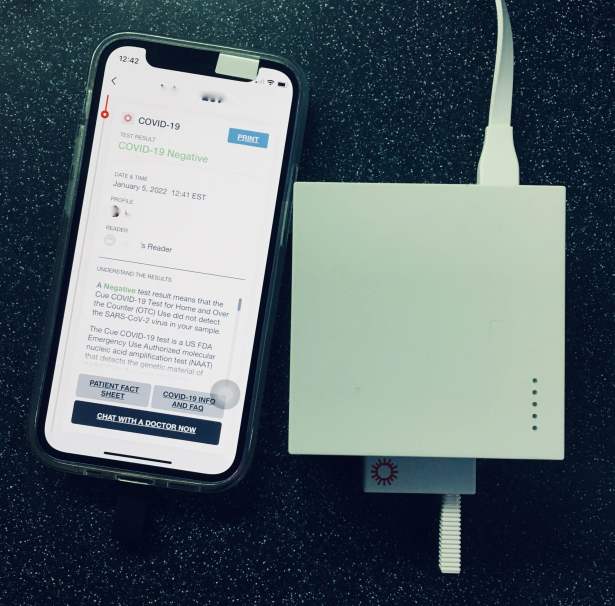
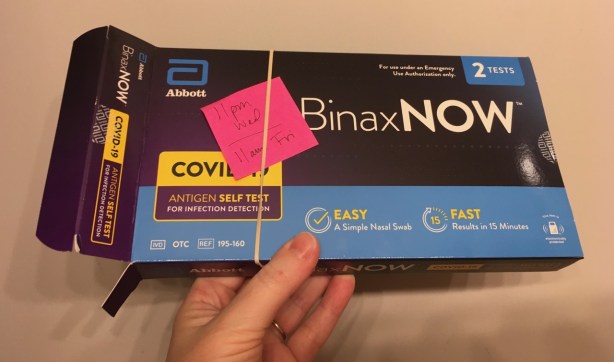



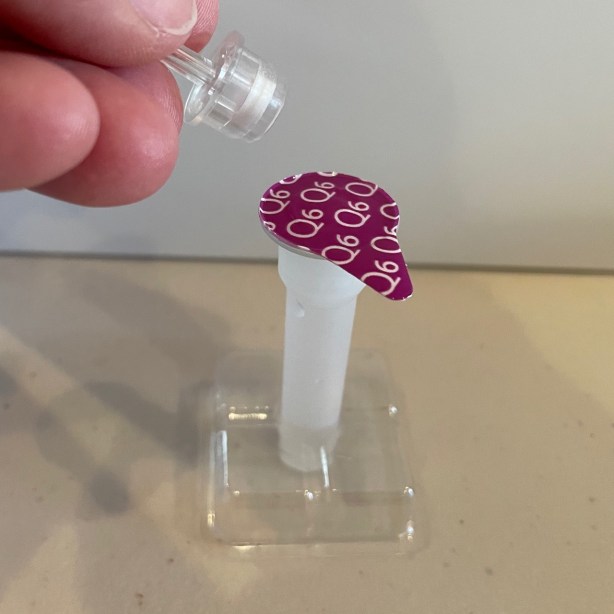
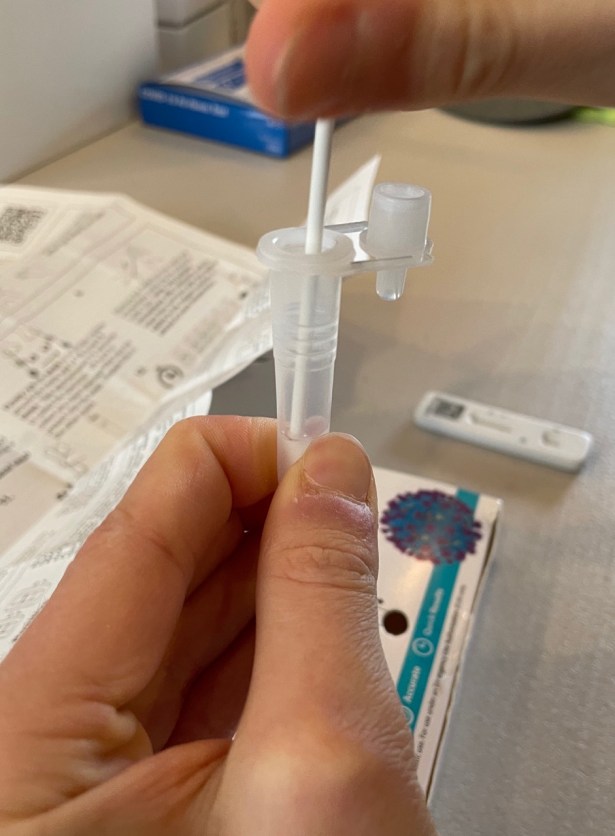
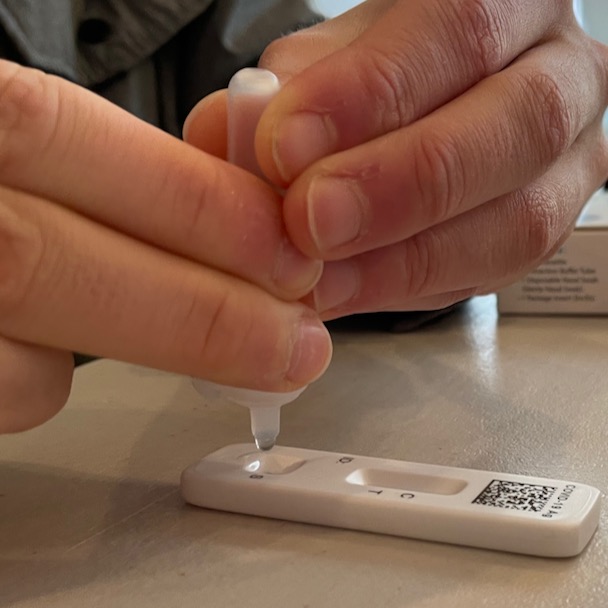 I felt compelled to compose and post this particular piece as quickly as possible to share my experience with the world. Had I only tried that first test brand, that I happened upon at my local pharmacy last fall, I would have no idea how tricky other versions of COVID-19 tests might be for those of us with more limited mobility.
I felt compelled to compose and post this particular piece as quickly as possible to share my experience with the world. Had I only tried that first test brand, that I happened upon at my local pharmacy last fall, I would have no idea how tricky other versions of COVID-19 tests might be for those of us with more limited mobility.
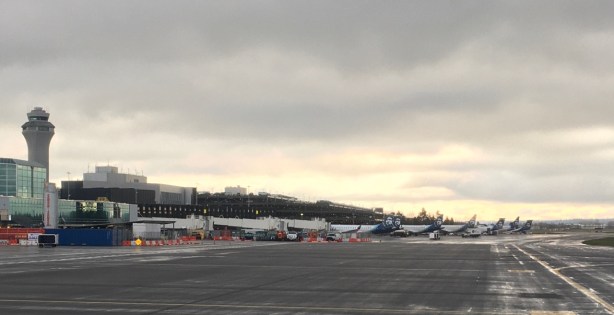
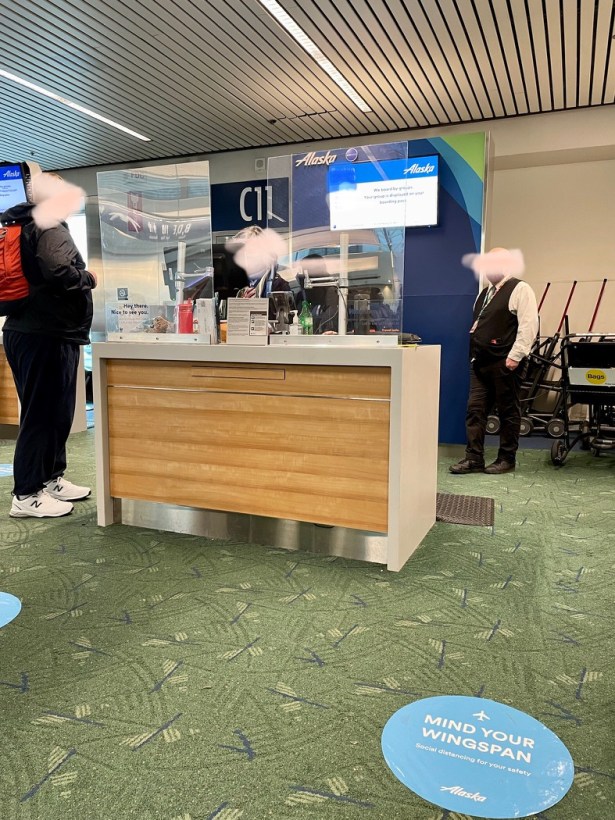






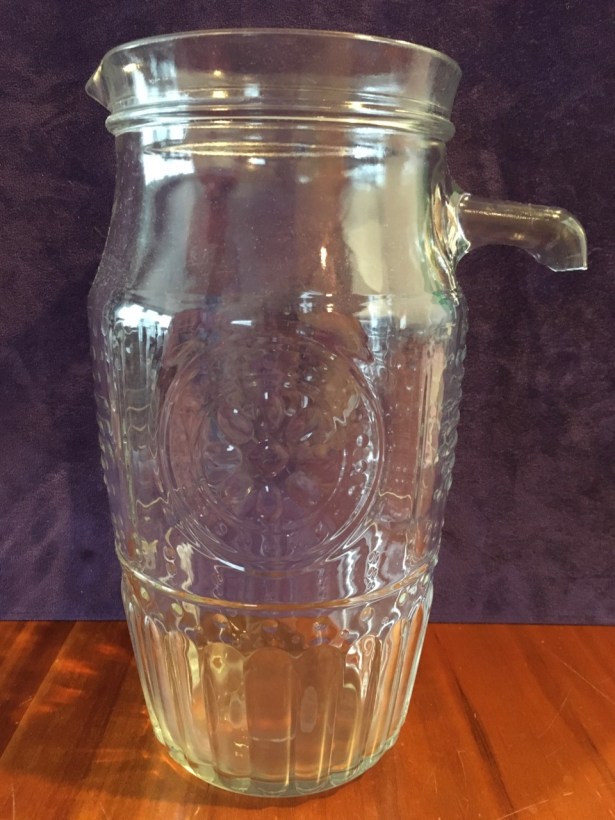
 You will need access to an oven or a toaster oven to cook veggies this way. Beyond that, all that’s required is about one hour and:
You will need access to an oven or a toaster oven to cook veggies this way. Beyond that, all that’s required is about one hour and: You can roast many other things, but the long storing properties of most root vegetables make them ideal for a COVID-19 era menu. Broccoli comes in little bunches; potatoes are sold in great big bags. Shelf life is the main reason for the discrepancy.
You can roast many other things, but the long storing properties of most root vegetables make them ideal for a COVID-19 era menu. Broccoli comes in little bunches; potatoes are sold in great big bags. Shelf life is the main reason for the discrepancy. Here’s a nice resource discussing
Here’s a nice resource discussing 
 Veg roasting tips from an unseasoned cook
Veg roasting tips from an unseasoned cook